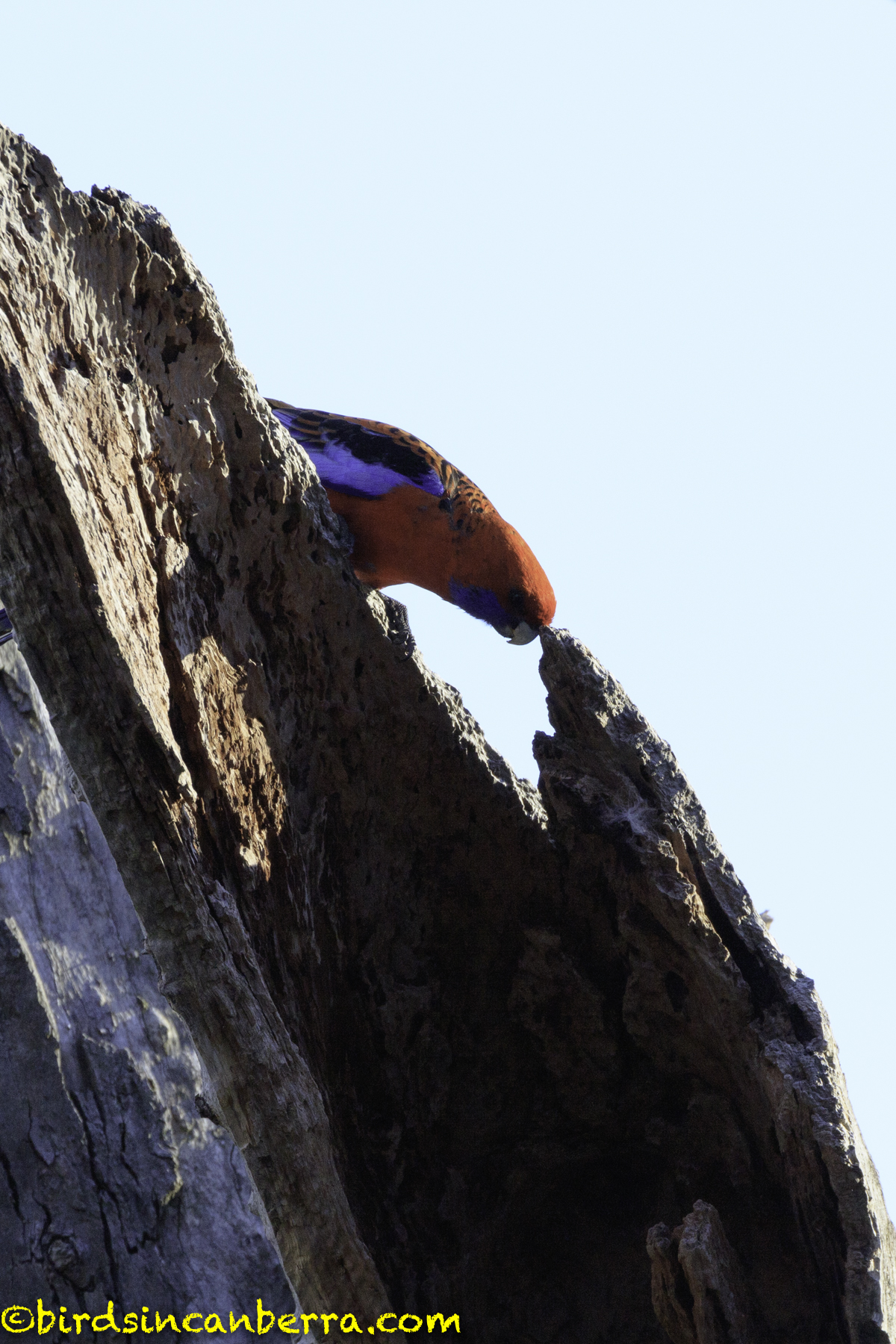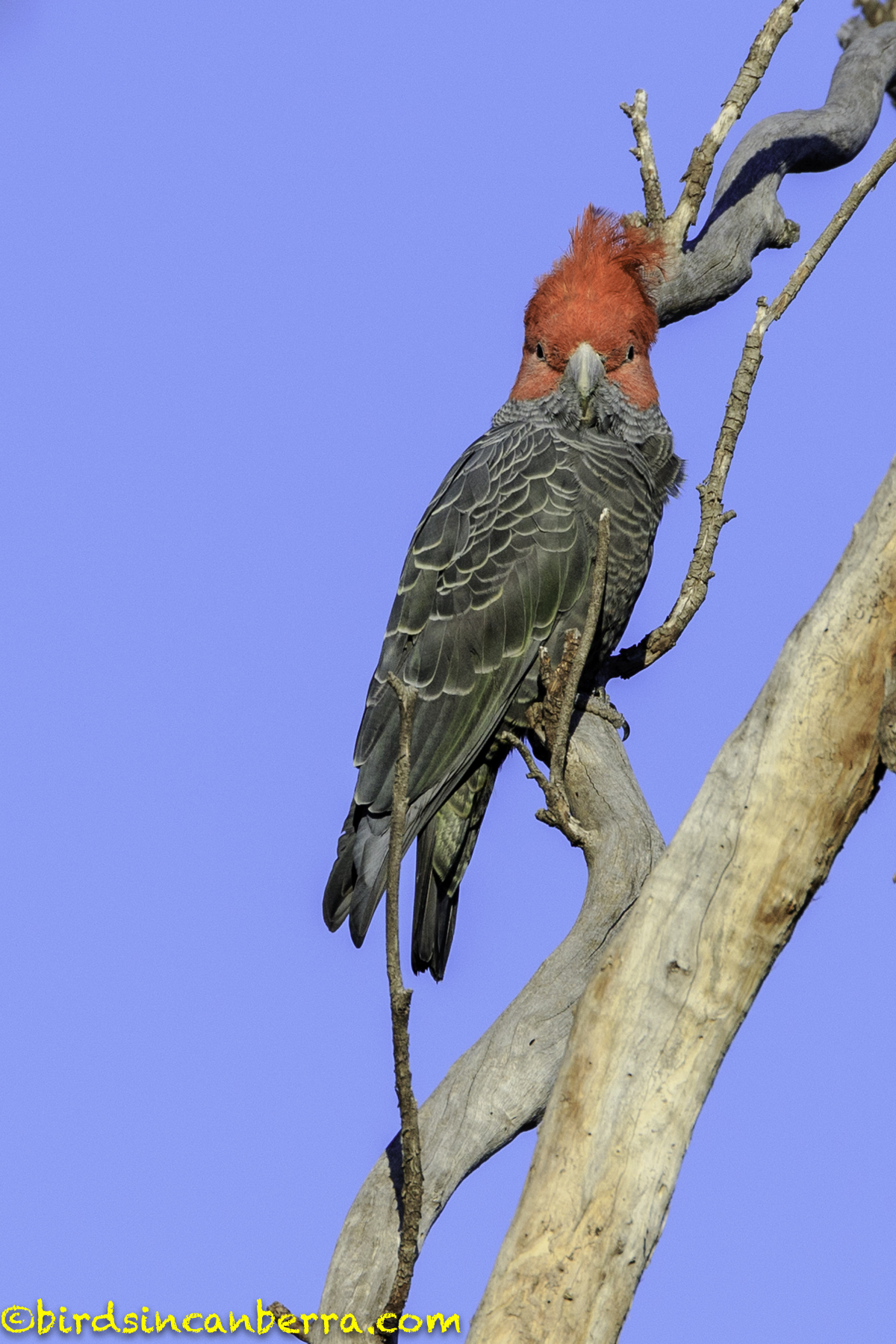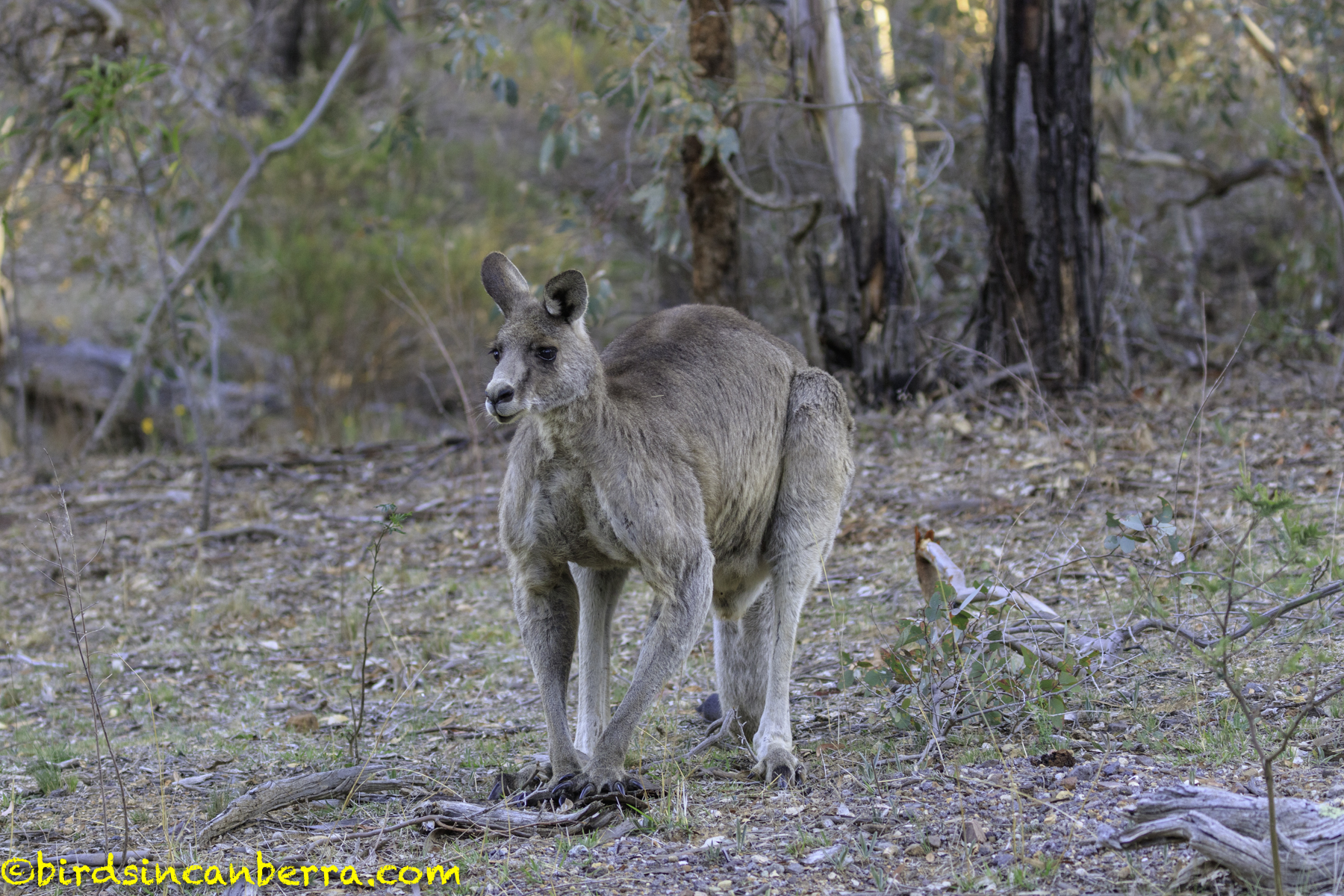I decided to upgrade my camera so my walk around Red Hill Nature Reserve was extra special for me since I was using a new camera I had been wanting for a while. I have upgraded to a Canon EOS 7D Mark II. Combined with my 100-400mm telephoto lens, it is a heavy unit to carry but I am already enjoying the better sensor and faster auto-focus than my old Canon DSLR. The light improved this morning from a cloudy start so I really enjoyed shooting with a camera that is almost designed for bird photography. The birdlife was plentiful with the Gang-gangs always available for photographs. I loved seeing the Straw-necked Ibis on Red Hill. Not only were they great subjects in flight to practice with the camera but their shiny plumage came through beautifully in the images. I also added to my kangaroo photographs this morning with some great subjects, including my first photograph of a real subject with my new camera. I even used my telephoto for some “macro” shooting of insects, which worked better than I thought.
The first bird I photographed with my new camera was a Laughing Kookaburra, one of my favourite birds because it is a kingfisher and because it is such an iconic Australian bird. The bird on the left was the actual first bird I took a photograph of with my new camera. Unfortunately, I was only able to get a single photograph before it flew off. The bird on the right is from towards the end of my walk.
There was a group of three Black-faced Cuckoo Shrikes in the area I was in on the north side of the hill. They kept their distance from me but more because they were moving between the larger trees.
While on the north side of Red Hill I came upon a eucalyptus tree with a long hollow in it. I saw a pair of Eastern Rosellas apparently comfortable at the hollow. I thought they had staked out their claim to the hollow. Then a Crimson Rosella arrived on the scene.
It was a single Crimson Rosella, although there were a number of this species flying around. The bird appeared to be interested in the hollow but only looked from the top. It may have intended to look further in the hollow but a third species of parrot was interested in the hollow, Gang-gang Cockatoos.
This Crimson Rosella was at a different location but I like the picture
I heard the Gang-gang Cockatoos before I saw them. One couple started in a tall dead tree. The first photograph shows the male flying between branches of the tree. The next photograph shows where he landed. I did not see a female until one arrived to chase away the Crimson Rosella discussed above at the tree hollow. The female perched on the top of the hollow but did not enter. The male I had been watching arrived at the hollow and eventually entered, going all the way in until he was completely hidden from sight. He re-emerged at the hollow before appearing to flap his wings while hanging at the entrance. He did not appear to be caught on anything, so I am not sure what he was doing. It remained in the hollow while the female stayed perched above the hollow. I did not see the female enter the hollow before I left.
Walking on from the Gang-gangs I was surprised to see two Pacific Black Ducks fly in. Only one landed on the ground, the other stayed in a tree. The duck on the ground walked away from me but it was not clear if it was avoiding me or heading somewhere. Its direction had it walking between two trees, one of which had the other duck in it.
I was distracted from the duck because a flock of Straw-necked Ibis landed in the area behind me, the first photograph. I knew they have been sighted on the hill recently but this was my first time seeing them here. Unfortunately, in moving to try to photograph them I inadvertently spooked these skittish birds so they took off again, photograph two. I was annoyed to have disturbed them. Later in my walk I saw a smaller flock land in an open area close to the southern edge of the reserve near Hughes. I carefully ensured I was approaching with the light behind me as well as trying to emerge slowly over the skyline with long grass hopefully shielding me. There was a group of four birds, two adults and two juveniles walking down the track. Photograph three shows the difference in plumage between the juvenile on the left and the adult on the right. The adult has a clear colour band at the base of its neck along with the straw-coloured neck plumes. The juvenile has less iridescent plumage, more of a mottled neck band and its neck has feathers rather than plumes. The birds were aware of me even though I did not follow them this time. In front of them were a group of people, so I think they felt hemmed in because they took-off. They flew in a northerly direction around the hill. Two birds landed in a tree not far away but a Sulphur-crested Cockatoo objected to their presence, forcing them out of the tree.
While I was up the hill in an area with a lot of trees I came saw a male Common Brown Butterfly skipping over the lear litter. From what I have read the brown zig-zags on the underside of the wing are the easiest way of seeing it is a male. In addition, the upper wing is still a dull colour whereas in the female the upper wing is the same bright colour as the topside. The butterfly really was perfectly camouflaged among the leaf litter when it stopped moving.
After seeing the ibis I noticed a feather on the ground. I was going to pick it up to look at it more closely when I noticed the calamus, the end which is under the bird’s skin, was covered in Meat Ants. I only had my telephoto lens with me so I used it to take the picture below. There did not seem to be any flesh present but the ants appeared to be taking whatever they could find.
It would not be a trip to Red Hill without seeing Eastern Grey Kangaroos. The first ever real subject I used my camera on was the adult male kangaroo in the first picture below. It was a low light photograph that my old camera would not have been able to handle. Photographs three to six were taken further up the hill. Photographs four and five were of a joey that did not look like it was long out of its mother’s pouch. The animal looked like it could not make up its mind about me. It was nervous about me, looked at me but slowly moved in my direction a little to sniff at its surroundings. Fortunately, I was able to leave without frightening the curious animal as it had been such a wonder experience to see a young animal’s way of learning about the world. The final photograph was a head study I took of an adult kangaroo.





























